There’s no doubt that cats make excellent companions, but cat allergies can cause having a feline friend difficult for some people. It’s been long rumored that tabby cats are hypoallergenic, but is there any truth to this claim?
Let’s look at the science behind tabby cats and allergies to see if this type of cat is a good option for those who suffer from pet allergies.
Are tabby cats hypoallergenic? Tabby cats are not hypoallergenic, despite what some people might think. The tabby coat pattern is a matter of genetics and does not have any bearing on the amount of Fel d1 in a cat’s saliva.
Fel d1 is the protein that causes allergies in humans, so even tabby cats can cause sneezing, wheezing, and other allergic reactions. Some cat breeds produce less Fel d1 than others, but there is no such thing as a completely hypoallergenic cat.
If you’re allergic to cats but still want to adopt one, your best bet is to choose a breed with low Fel d1 levels. Siberians, for instance, are known for being relatively allergy-friendly.
However, it’s always best to spend time around the cat before committing to be sure you can tolerate its presence.
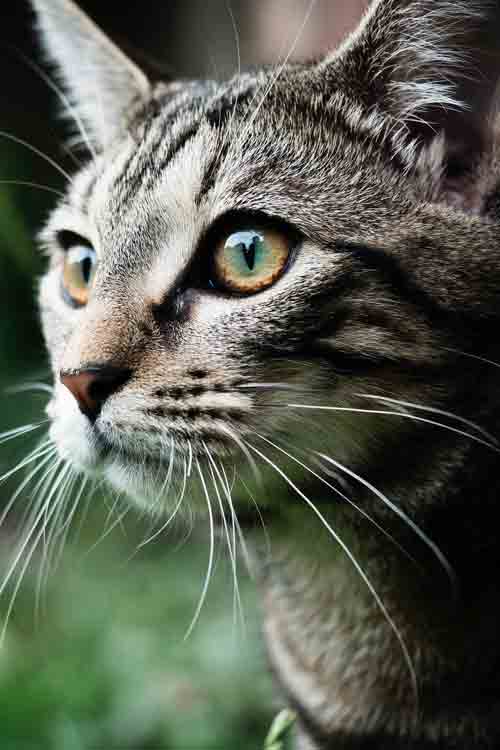
What Breed Is A Tabby Cat?
A tabby cat is a type of domestic cat that has a coat with patterns of stripes, dots, lines, or swirling patterns, with tabby coming from the translation of the French word tabis meaning “striped silk linen.” The tabby cat has distinct M-shaped markings on its forehead. Tabbies come in a wide range of colors and make up around 55 percent of the registered pedigree cats worldwide.
The tabby coat pattern is found in many breeds, including American and British Shorthairs. However, it is also found in non-pedigree or mixed-breed domestic cats. All tabby cats have this ‘M’ shape on their forehead, no matter what color or pattern the cat’s fur is.
The coat on a tabby cat can vary slightly in appearance, from stripes to whorls, spots, and more. The tabby coat is usually orange or brown but can also be black, gray, or tabby-patterned.
The tabby pattern is created by placing the pigments in the tabby gene. The tabby gene is dominant, meaning that if a cat has one copy of the tabby gene, it will express the tabby phenotype.
Can You Be Allergic To Tabby Cats?
Contrary to popular belief, tabby cats are not hypoallergenic. You can be allergic to any cat, regardless of coat color or type. Allergies are caused by proteins found in an animal’s skin, saliva, and urine, and tabby cats are no different from other felines in this regard.
Some people may find that they have a less allergic reaction to tabby cats than to other types of cats.
It is likely because tabbies have shorter cat fur, which means there is a less allergenic protein on their skin.
If you’re considering adopting a tabby cat but are worried about allergies, it’s good to spend some time around one before committing.
It will give you a better idea of whether or not you’re allergic to tabby cats. Different cat breeds have different levels of allergenic protein in their skin and saliva, so you may also want to consider adopting a breed known for being allergy-friendly.
Siberian cats, for example, are hypoallergenic breeds producing less allergenic protein than other cat breeds.
There is no such thing as a tabby cat breed because tabby is simply a coat pattern; however, some cat breeds are more likely to have a tabby coat.
Some of the most popular tabby cat breeds include the American Shorthair, British Shorthair, Exotic Shorthair, and Maine Coon.
While there is no such thing as a hypoallergenic cat, some breeds produce less allergenic protein than others. So if you’re allergic to cats but still want to adopt one, your best bet is to choose a breed with low Fel d1 levels. Siberians, for instance, are known for being relatively allergy-friendly.
How Much Do Tabby Cats Shed?
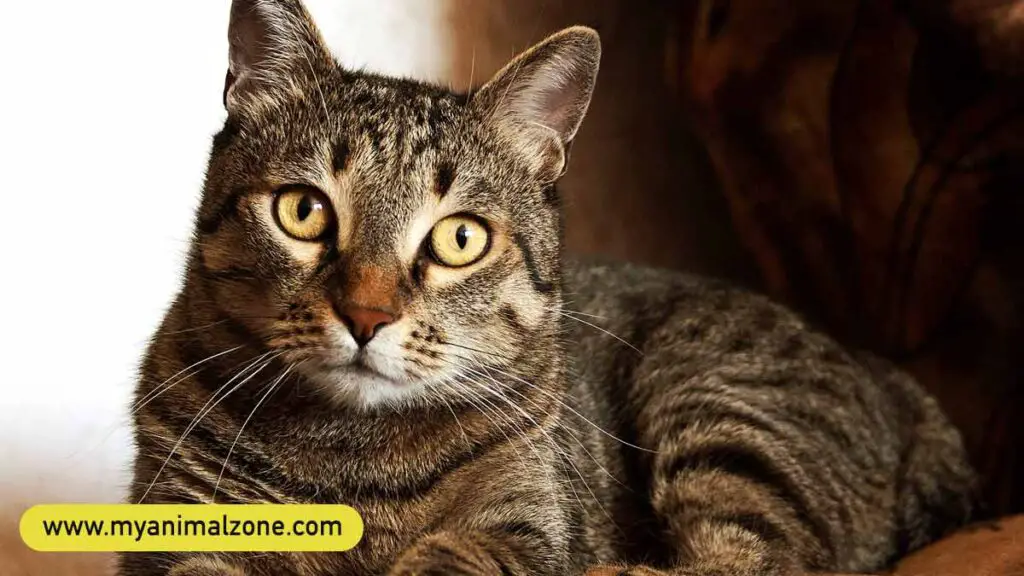
The amount of the fur that tabby cats shed depends on the length of their fur. Long-haired tabby cats will shed more than short-haired tabby cats. All cats shed some fur, but you can minimize the fur that tabby cats shed by brushing them regularly.
Regular brushing will help remove loose and dead fur from the coat, and it will also help distribute the natural oils evenly. This will keep the coat healthy and minimize shedding.
If you’re allergic to cats but still want to adopt one, your best bet is to choose a breed with low Fel d1 levels. Siberians, for instance, are known for being relatively allergy-friendly.
When it comes to shedding, all cats are different. Some cats shed more than others, and some shed year-round while others only shed seasonally. So if you’re concerned about how much your tabby cat will shed, it’s a good idea to ask the breeder or shelter staff about the shedding habits of the specific cat you’re interested in.
If we talk about the question, are tabby cats hypoallergenic? As we have discussed above, there is no such thing as a hypoallergenic cat, but some breeds produce less of the allergenic protein than others. So, we can say that tabby cats are not hypoallergenic.
Adopting a Siberian cat would be a better option for you if you’re allergic to cats but still want to adopt one. Siberians are known for being relatively allergy-friendly.
When it comes to shedding, all cats are different. Some cats shed more than others, and some shed year-round while others only shed seasonally. So if you’re concerned about how much your tabby cat will shed, it’s a good idea to ask the breeder or shelter staff about the shedding habits of the specific cat you’re interested in.
So, we hope that now you have a clear understanding of tabby cats and whether they are hypoallergenic or not.
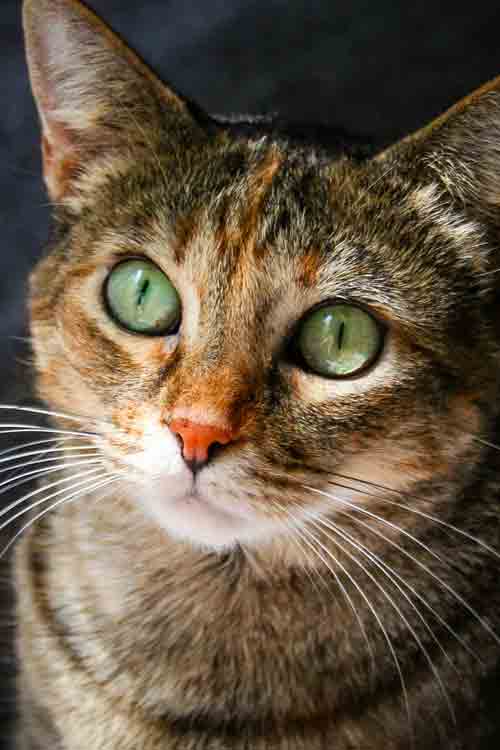
How Do Cats Cause Allergies In Humans?
Cat allergies are twice as common as dog allergies, affecting an estimated 10 percent of the population. The proteins that cause these allergies are found in a cat’s saliva, urine, and dander (dried skin flakes).
When these proteins contact human skin, they can cause a range of symptoms, including rashes, hives, and difficulty breathing. In severe cases, cat allergies can even trigger anaphylactic shock.
While there is no cure for cat allergies, there are some hypoallergenic breeds that may be less likely to trigger reactions. These include the Sphynx, the Devon Rex, and the Cornish Rex.
While any cat can cause allergies in humans, some breeds are more likely to trigger reactions than others. For example, the most common hypoallergenic cat breed is the Russian Blue, followed by the Sphynx and the Devon Rex.
These breeds produce lower glycoprotein Fel d 1, which is responsible for triggering allergic reactions in humans. Other hypoallergenic cat breeds include the Cornish Rex, the Javanese, and the Oriental Shorthair.
While hypoallergenic cats are less likely to cause allergies, they are not entirely allergy-free. Some people may still experience symptoms even when around hypoallergenic cats, so it’s essential to consult with a doctor before making any decisions.
How To Own A Cat When You’re Allergic?
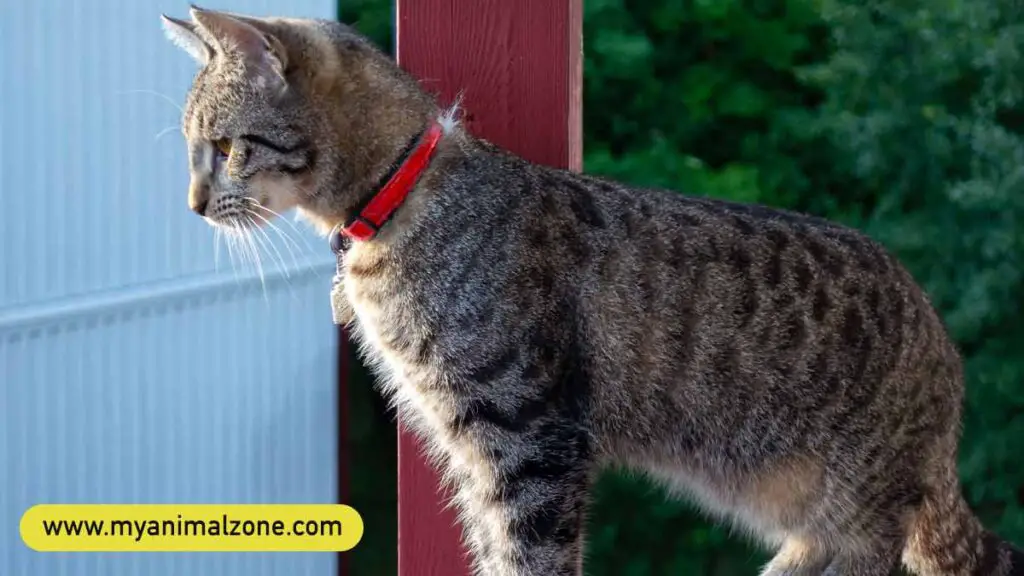
Though many people are allergic to cats, that doesn’t mean they have to miss out on owning one of these adorable pet cats. So there are a few things you can do to reduce your allergies and still be able to enjoy your cat.
The first thing you’ll need to do is get an allergy test. This will help you determine how severe your allergies are and what steps you need to manage them.
If your allergies are mild, you can do a few things to reduce your symptoms. These include:
- Washing your hands after petting your cat
- Wiping down your cat with a damp cloth
- Keeping your cat out of your bedroom
- Using an air purifier
- Vacuuming regularly
If your allergies are more severe, you may need to take more drastic measures. These include:
- Medication
- Allergen shots
- Avoiding contact with your cat
- Finding a new home for your cat
No matter how severe your allergies are, there are ways you can still enjoy owning a cat. Talk to your allergy doctor about what options are available to you and make a plan that works for you and your cat.
Look For These Cat Allergy Symptoms.
If you think you might be allergic to cats but aren’t sure, there are a few things you can look for. First, allergic reactions can cause symptoms from mild to severe.
Some of the most common symptoms include:
- Itchy eyes
- Runny nose
- Sneezing
- Itchy throat
- Shortness of breath
- Wheezing
- Chest tightness
- Coughing
- Hives
- Rash
If you experience any of these symptoms, it’s essential to see a doctor as soon as possible. For example, a doctor can perform an allergy test to see if you’re allergic to cats and help you find the best way to manage your symptoms.
Tabby cats are not hypoallergenic, although certain breeds are less likely to cause an allergic response. The Sphynx, Devon Rex, and Cornish Rex are examples of such breeds.
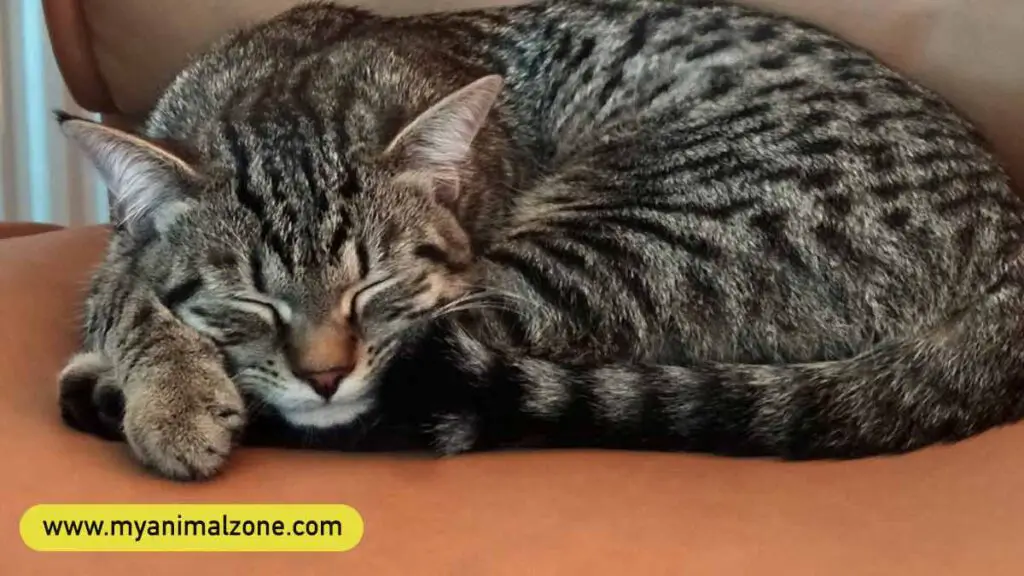
Are Hairless Cats Hypoallergenic?
Are Hairless Cats Hypoallergenic? Although the hairless Sphynx is often one of the first cat breeds that comes to mind for allergy sufferers due to their lack of hair, these cats are not as hypoallergenic as you would think.
This is because cats produce two types of allergens: Fel d 1, which is found in their skin and saliva, and Fel d 4, which is located in their hair. Since Sphynx cats still produce Fel d 1, they can cause allergic reactions in people who are sensitive to it.
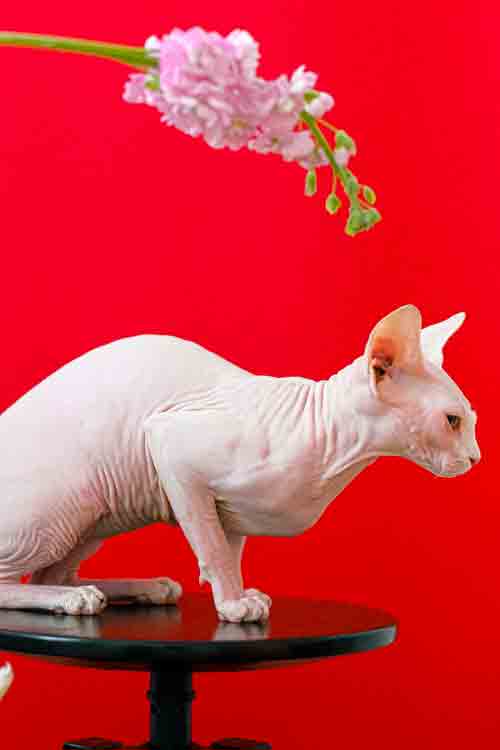
However, some people may find that they are less allergic to Sphynx cats than other cats because they don’t have the Fel d 4 protein in their hair.
If you’re considering getting a Sphynx cat and are allergic to cats, it’s essential to spend some time around them before committing. That way, you can see if you’re allergic to them or not.
What Are Kinds Of Cats Hypoallergenic?
There are a few cat breeds that are considered to be hypoallergenic. These breeds include the Bengal cat, the Siberian, the Balinese, the Oriental Shorthair, the Javanese, the Devon Rex, the Cornish Rex, the Hairless Sphynx, and the Burmese, the Ocicat, the Colorpoint Shorthair, and the Russian Blue.
Allergies are caused by a reaction to the protein found in a cat’s saliva or skin. So, even if a cat doesn’t shed much fur, it can still cause an allergic reaction in some people.
Remember, no cat is truly hypoallergenic, so even the breeds known for being hypoallergenic can still cause reactions in some people.
The best way to find out if you’re allergic to a specific cat breed is to spend time around them and see how your body reacts.
Do Allergy Shots Work For Cat Allergies?
Yes, allergy shots can be effective for treating cat allergies. Allergy shots, also known as immunotherapy, work by slowly introducing small amounts of the allergen into your body.
Over time, this helps your body build up a tolerance to the allergen and can reduce or eliminate your allergic reactions.
According to allergist and immunologist James Sublett, president-elect of the American College of Allergy, Asthma & Immunology, allergy shots or immunotherapy have been found to cure pet allergies in as much as 80% of patients who complete the entire treatment course.
How Do I Reduce Allergies In Cats?
You can do a few things to reduce your allergies to cats. First, try to keep your cat out of your bedroom. This is because you spend a lot of time in your bedroom, and the allergen can build up there.
Try to keep your cat well-groomed. Regular brushing can help reduce the amount of allergen on your skin or clothing.
There are other things you can try.
- Keep a safe distance. Keep your cat away from you as much as possible.
- Limit the cat’s movements to specific areas of the home.
- Keep the cat outside as much as possible.
- Consider getting an air filter.
- Shower after being around your cat.
- Use hypoallergenic laundry detergent.
- Wash your hands after petting your cat.
- Vacuum regularly and dust often.
- Don’t let your cat sleep on your bed.
- Consider getting a hypoallergenic breed.
List Of Lowest Shedding Cat Breeds.
Cats shed fur for various reasons, such as biological and environmental influences. Seasonal changes from winter to summer are enough to cause a cat to shed its coat. Cats, like humans, are susceptible to stress, allergies, poor diets, and illnesses that induce them to lose their hair. Some low-shedding cat breeds are
They include:
- LaPerm
- Siamese
- Korat
- Sphynx
- Burmese
- Ocicat
- Siberian
- Singapura
- Bengal
- Somali
- Cornish Rex
These breeds have short hair except the Cornish Rex, which is bald. Bombay has the most coats compared to the other lowest shedding cat breeds and has a single coat of black fur that is shiny and sleek.
The Devon Rex has wavy and frizzy hair, while the Cornish Rex has curly hair. The Bengal is said to be the most active and playful of all these breeds, followed by the Somali.
The Singapura is the smallest of all the lowest-shedding cats. It is also one of the quietest and least active cats out there. So if you are looking for a cuddly lap cat, any of these cat breeds would be an excellent choice!
Final words
In conclusion, the answer to the question, Are tabby cats hypoallergenic? It is no. Even the breeds known for being hypoallergenic can still cause reactions in some people. The best way to find out if you’re allergic to a specific cat breed is to spend time around them and see how your body reacts.



